As a child pouring over Clifford Pope’s classic book The Giant Snakes, I came across an account of an African Rock Python (Python sebae) that had consumed a 130 pound impala antelope. I pictured the scene, and determined to learn more about this largest of all African snakes. As a teenager, I went to work for a well-known NYC animal importer. In the course of unpacking hundreds of African Rock Pythons, all straight from the wild, I came to respect their ferocity – Reticulated Pythons, huge Florida Green Watersnakes, Anacondas and other notable “nasties” paled in comparison! Working at the Bronx Zoo’s herpetology department, I read reams of Copeia, Herpetological Review and Herpetologica back issues, always scouting for unusual feeding records. I was not disappointed…certain populations of African Rock pythons seem especially capable, even by large constrictor standards, of taking huge prey items…humans included (please also see this article on human predation by Reticulated Pythons). Incidentally, the impala mentioned above may be the largest snake meal ever documented. It was recorded in 1955 in South Africa – the 60 pound deer regurgitated by a Green Anaconda I tagged in Venezuela pales in comparison!
Description
Named for the renowned 18th century naturalist Arthur Seba, the African Rock Python is one of the world’s longest snakes. Individuals in excess of 20 feet have been recorded, with the record usually being given as approximately 24 feet. True giants generally live away from human habitation, and usually, but not always, turn up in the central and northern portions of the range.
The body bears a variety of blotches, some of which may join to form irregular stripes. Their color and pattern varies through shades of tan, brown, olive-green and dark yellow, with certain populations being somewhat distinct from others in appearance. The sub-ocular mark, a triangle-like blotch below the eye, may be reduced or absent in the southern part of the range. In common with other pythons, heat-sensing pits are present and both lungs are functional (most snakes utilize a single lung).
Range
Rock Pythons inhabit much of Africa south of the Sahara. Ranging from Senegal, Ethiopia and Somalia in the north to Namibian and South Africa in the south, they have been recorded in 31 countries.
Released pets have likely established a breeding population in Florida, USA; please see this article for further information.
Habitat
Extremely adaptable, this snake inhabits savannas, swamps, river margins, mangrove flats, wooded grasslands, thorn scrub, kopjes, rainforests and desert borders. Farms, ranches, plantations and village outskirts are often colonized as well. African Rock Pythons may become somewhat dormant during droughts.
Diet
The diet of this top-level predator is as diverse as the habitats it occupies. One 13-foot-long individual was found to have eaten a large leopard, and I recently saw photos of another consuming a young but sizable wildebeest. Human predation has been documented.
Other food items include monkeys, antelopes, wart hogs, pouched rats, hyrax, hares, monitor lizards, crocodiles, cranes and bats. Individuals living near farms and villages take goats, dogs, guinea fowl, pigs, geese and other domestic animals. A 10-foot-long feral African Rock Python recently made headlines in Florida after killing a 60 pound husky in a backyard (please see this article).
African Rock Pythons are constrictors, and hunt via ambush or active searches. Recent studies indicate that cardiac arrest and blood vessel damage may precede suffocation as the cause of death.
Reproduction
Females guard and incubate clutches of 20-100 eggs, which hatch in approximately 90 days. Hatchlings typically measure 16-24 inches in length.
Taxonomy
Many herpetologists classify the African Rock Python as Python sebae. Others recognize two subspecies – P. s. sebae, the Northern African Rock Python, and P. s. natalensis for those found from southern Kenya to South Africa. Some propose that the southern animals are a distinct species, P. natalensis.
Those dwelling in southern Africa tend to be smaller and darker than those in the north, and have larger head scales. The sub-ocular mark is small or absent.
Conservation
The species’ health varies widely across the huge range, with robust populations in some regions and near-extermination in others. The African Rock Python is listed on CITES Appendix II. Threats include habitat loss and collection for the leather and food trade.
African Pythons as Pets
This species is not suited for inclusion in most private collections, and ownership is now carefully regulated in the USA. If you wish to keep a python native to Africa, there are many fascinating species from which to choose. Please see this article on Ball Python Care, and post below if you wish to discuss others.
Further Reading
Giant Meals Taken by Giant Constrictors
 That Reptile Blog – Reptile, Amphibian and Exotic Pet Care and Information
That Reptile Blog – Reptile, Amphibian and Exotic Pet Care and Information


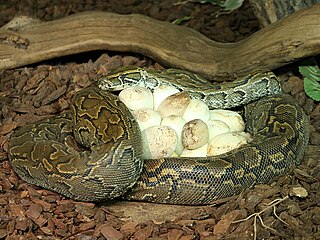
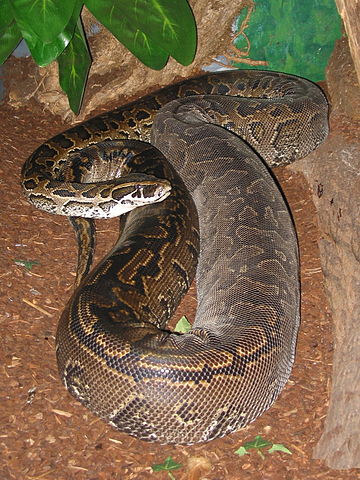
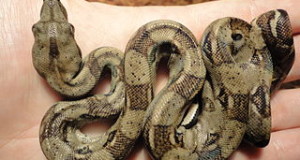
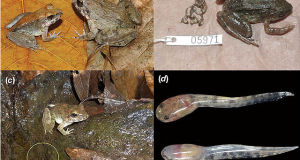
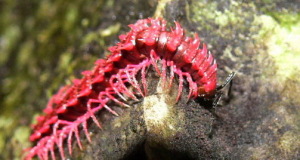
Frank. i have a four year old African Rock,she is a pretty tame animal though not as tame as my Burms or Retic. however,she has not fed on anything for six months! everything,including her temps/humidity and her health have all checked out fine. question,is this normal? i have over ten years experience in keeping Burms,Retics and green Anacondas and have never had any go off feeding unless for breeding etc. have any clues or advice on what it could be? thank you.
Hello Kevin,
They do not usually go off feed for that long other than for the reasons you mentioned…internal rhythms etc do not seem as important as for ball pythons and some others; always a chance that animal’s ancestors originated from a population that is controlled by circadian rhythms, but you would likely have seen evidence of such before now; blood tests, cloacal swab might be useful. Best, Frank